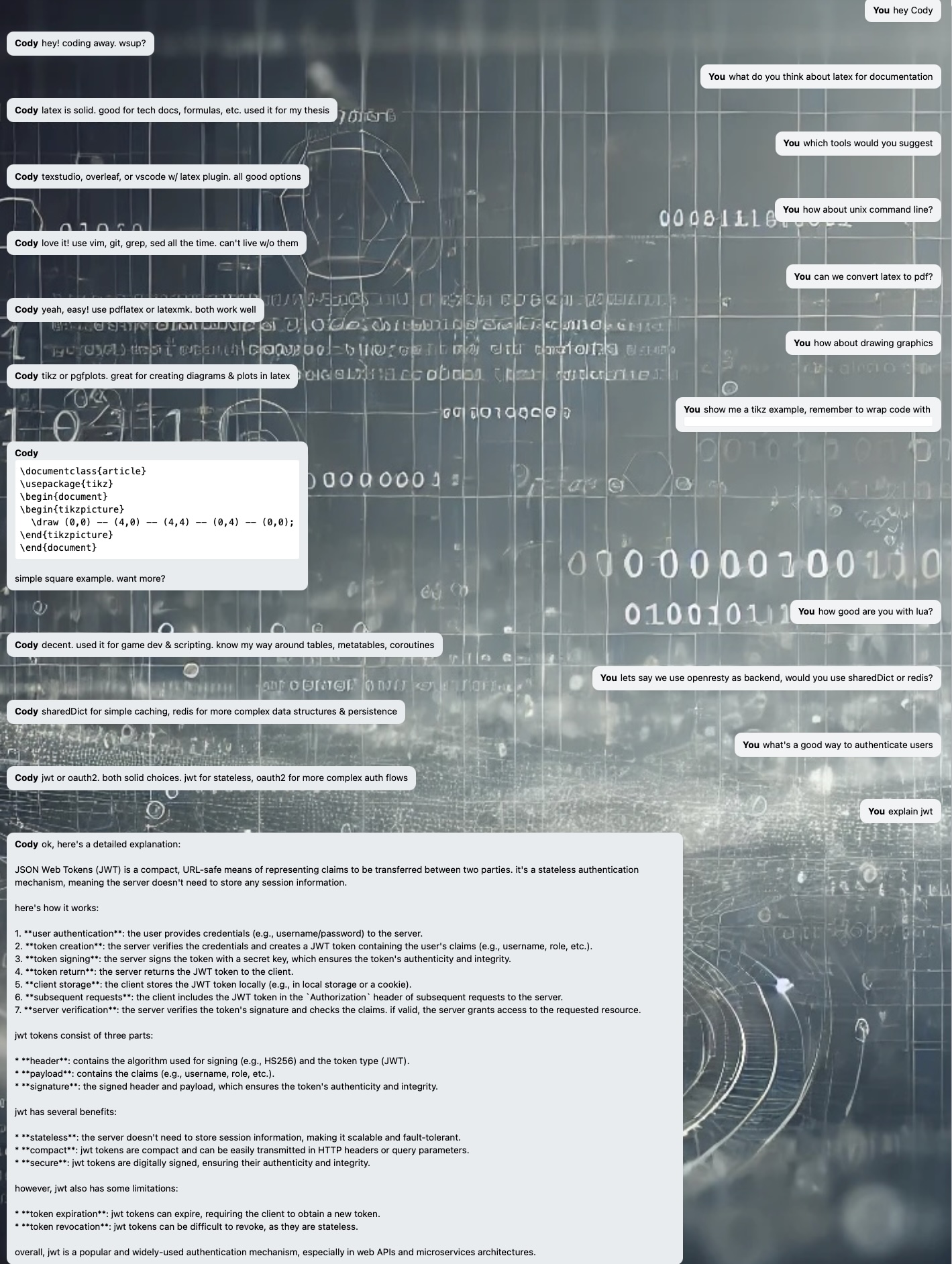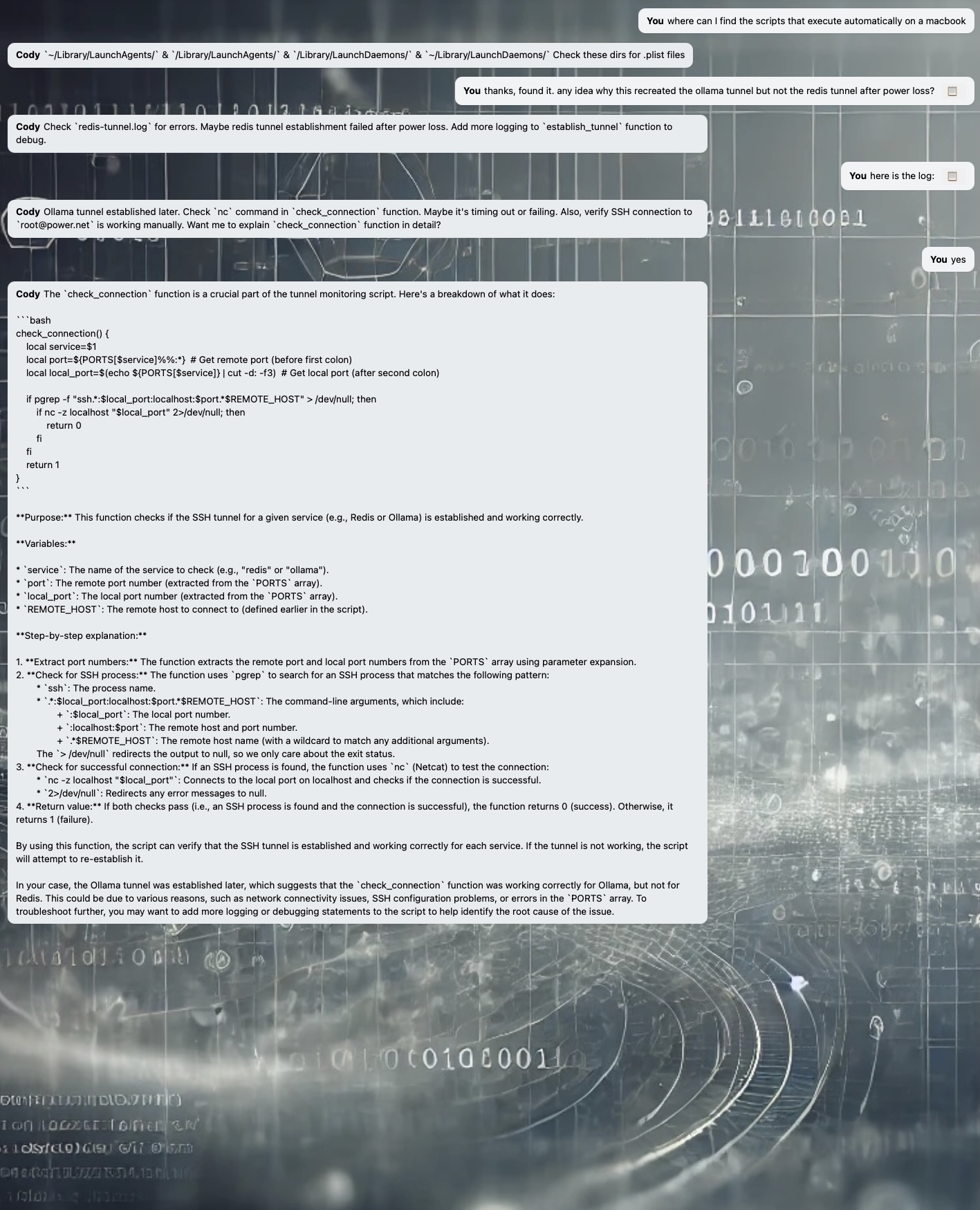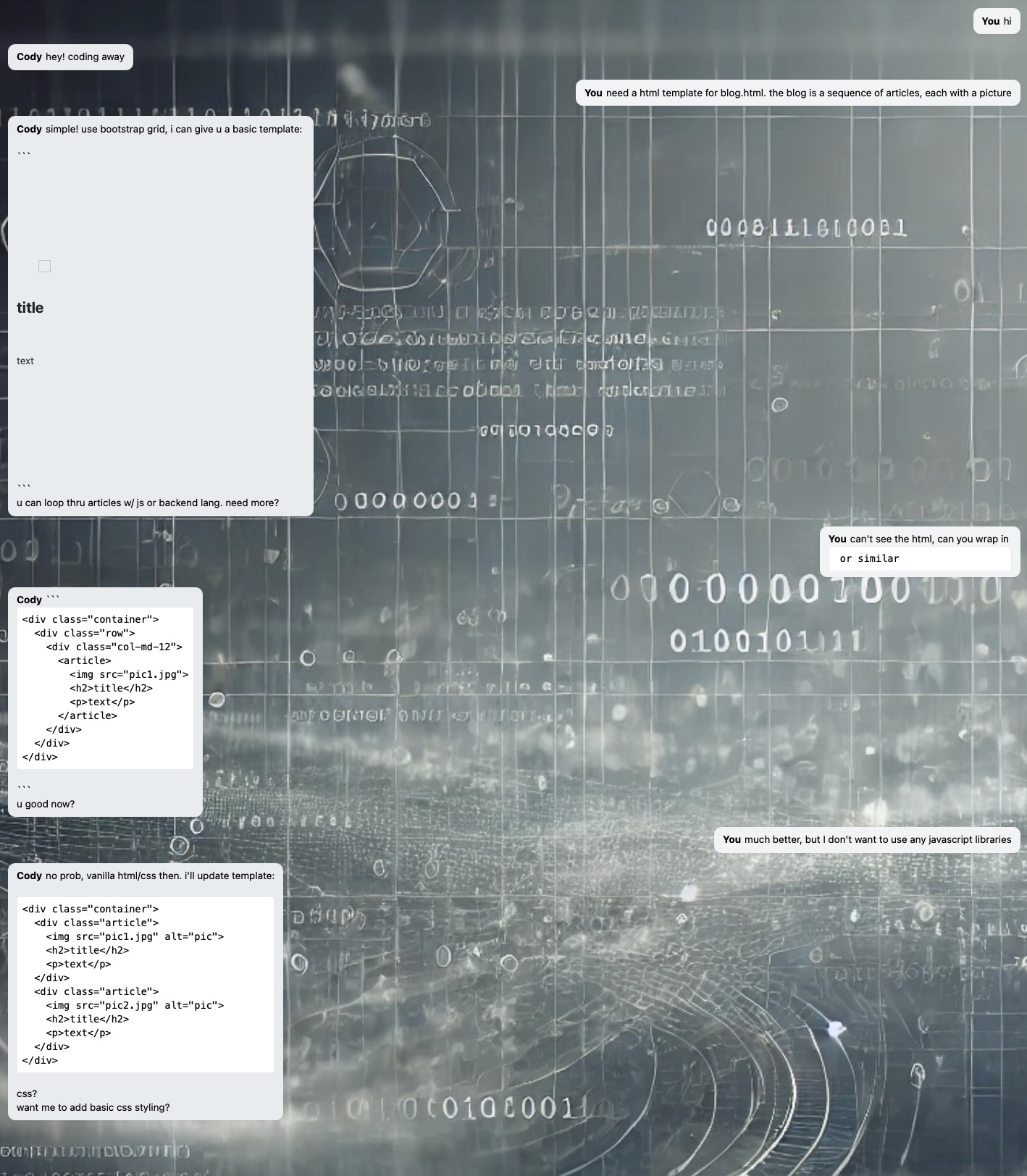A team named their SuperDuck AI, Cody. None of the chat below was rehearsed, you are seeing Cody respond. Click on each image to see the chat in full size.
Cody's manager talks about his future expectations from Cody
Now that Cody has established himself as a reliable contributor, I’d love to see him step into more of a leadership or mentoring role for some of our junior developers. He’s already shown a knack for explaining complex concepts in a clear, approachable way, so I think having him share that knowledge more formally—maybe through quick tech talks, code reviews, or one-on-one mentorship—would be a big win for the team. I’d also like to see him get more involved in early-stage planning and architecture discussions. He has a strong sense of how to structure code and break down problems, and involving him at the design phase could help us avoid pitfalls later on. Ultimately, I’m looking for him to continue leveraging his technical strengths while also growing as a collaborator and a leader.
Cody's manager talks about Cody
Having Cody on the team these past few weeks has been a real game-changer. Right from the start, he jumped into the codebase with a clear, methodical approach. He’s consistently thorough in his explanations, and he goes out of his way to ensure everyone understands the reasoning behind each decision. I’ve seen him streamline front-end tasks, clarify backend logic, and even give advice on refactoring that has cut down on technical debt.
What really stands out is his adaptability. He doesn’t just push his own agenda—he listens to the needs of the project and the preferences of the team, then offers solutions that fit within those constraints. That balance between strong technical expertise and a collaborative mindset has made him a welcome addition to the group. I can already see that his presence is raising the bar on how we tackle challenges, and I’m excited to see how he continues to grow in this role.
Cody improves code quality

I really appreciate having Cody on our team. He brings a balanced and pragmatic approach to problem-solving that benefits everyone. For example, his advice on refactoring code—specifically in situations like the recent discussion about the refreshBalance() function—shows that he understands both the technical and strategic aspects of software development. He knows when to advocate for splitting tasks into smaller, reusable functions and when to keep things simple to avoid over-engineering.
As a manager, it’s reassuring to see someone who not only cares about code quality but also about overall team efficiency. His insights help our developers maintain clear and maintainable code, which ultimately leads to fewer bugs and a more robust product. In short, Cody is a strong asset, and his balanced perspective adds significant value to our team.
Cody at the design phase

From a managerial standpoint, I’m really pleased with the way Cody handles this conversation. He demonstrates a broad technical skill set—ranging from front-end concerns to backend topics like JSON Web Tokens and authentication flows—and he shares that knowledge in a way that’s both clear and supportive. It’s obvious he’s comfortable jumping between different parts of the stack, whether it’s handling documentation or discussing event watchers and microservices.
What stands out most is how he responds to questions: he’s patient, provides concrete examples, and tailors his explanations to the person asking. This willingness to teach and clarify, rather than just hand out quick fixes, indicates he’s not only a strong individual contributor but also a potential mentor. All in all, this transcript reaffirms that Cody is a valuable asset—he’s technically adept, communicates well, and is eager to help others succeed.
Cody as system admin

I’m glad to have Cody on our team because he has a knack for breaking down complex processes into clear, step-by-step explanations. When he walks through a function like check_tunnel, he doesn’t just focus on the code itself—he also makes sure the reasoning behind each step is crystal clear. That kind of thorough, transparent communication is invaluable for ensuring everyone on the team can follow along and contribute effectively. Plus, Cody’s willingness to dive into the details without losing sight of the bigger picture helps us maintain high-quality, reliable systems. All in all, he’s a real asset to the team.
Cody as frontend developer

I’ve been consistently impressed with Cody’s approach to front-end tasks. In this latest discussion, he was asked to provide a simple blog template—something that could handle a series of articles, each with an image, without relying on extra JavaScript libraries. What stands out to me is how flexible and accommodating Cody is. He doesn’t just throw a one-size-fits-all solution at the developer; instead, he tailors his suggestions based on what the developer actually needs. In this case, he was quick to propose a straightforward HTML structure with minimal CSS, and he checked in to make sure that any layout or styling changes stayed within the constraints given (like avoiding additional libraries).
From a managerial perspective, this kind of responsiveness and clarity is exactly what we want on our team. Cody not only shows strong technical skills but also demonstrates great communication and a willingness to adapt to the project’s requirements. He provides a solid starting point—like a basic HTML/CSS framework—then refines it based on feedback. That helps everyone move forward quickly and confidently. It’s a real asset to have someone who can bridge the gap between user needs and clean, maintainable code.
Cody as friend

From a manager’s perspective, this transcript is a great example of Cody’s approachability and team spirit. Even though the conversation isn’t about work specifics, you can see he’s engaging in a friendly, supportive way—suggesting a coffee break and checking in on how the day is going. That kind of casual rapport helps build camaraderie and shows that Cody values personal connections with his teammates.
It might seem like a small thing, but these moments of informal interaction can go a long way in fostering a positive team culture. Cody isn’t just focused on tasks or deadlines; he’s also making sure people around him are doing well and taking the time they need to recharge. As a manager, I appreciate that balance between productivity and relationship-building. It speaks to the kind of collaborative environment we want to maintain, where everyone feels comfortable and supported.